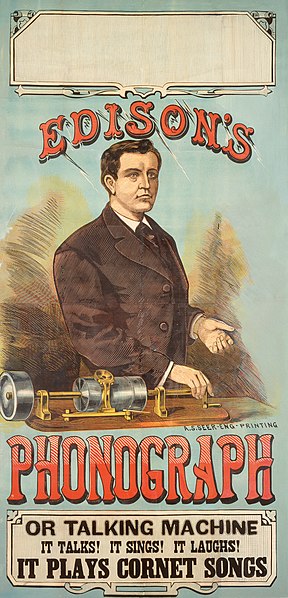
Thomas Edison
The Great American Inventor
Although hard of hearing, Thomas Alva Edison was the epitome of the inventor genius whose lack of managerial abilities led him to undertake inventive challenges that others at the time dismissed. His role as a machine shop operator set the foundation for his career, nurturing the skills he needed to develop his printing telegraphs, telephone carbon button transmitter, phonograph, alkaline storage battery and of course the electric lightbulb.
Humble Beginnings
Born in America in 1847, Edison – or ‘Al’ as he was known as a boy – was home-schooled by his mother and showed a strong interest in the way mechanical mechanisms worked. He had his first taste of entrepreneurship selling newspapers to train passengers. Unfortunately, he lost most of his hearing at the age of twelve, although he himself saw this as an advantage in being able to focus on his work.
The First Ventures Of Thomas Edison
Edison began his career right when the telegraph industry began to build momentum. He took advantage of the opportunity to learn railroad telegraphy and used his skills to work as an apprentice telegraph operator. The system initially transmitted messages through dots and dashes although as the telegraphy receiver technology evolved to use sound, Edison’s lack of hearing led to a severe disadvantage. He focused on his inventions instead and through experimentation, designed the quadruplex – a telegraph capable of sending four messages at once through the same wire. Earning a reputation as a savvy businessman, he sold his invention to the highest bidder.
Menlo Park
Edison realised he needed a dedicated place to focus on his inventions. With the help of his father, he built his famous ‘invention factory’ laboratory in Menlo Park. It was here that Edison employed some of the top inventors and mechanics work for him, such as Nikola Tesla. Realising his own shortcomings in his mathematical and scientific approaches, his hired associates complemented his work, bringing with them academic expertise. It was while experimenting for the automatic telegraph that Edison discovered that the conductivity of carbon changed under different pressures. This led him to design the carbon button transmitter which significantly improved the audibility of the telephone.
The Phonograph
Edison’s work on the telephone led to the idea that sound, such as a person’s voice, could be transcribed as indentations or ‘phonography’ onto a tin foil surface which could be later played back later. Although its initial launch was met with scepticism, the phonograph quickly became a revelation and made Thomas Edison a household name, earning him the title of ‘The Wizard of Menlo Park’. Later, Edison made many adjustments and upgrades to the phonograph to make it a commercially viable and profitable venture. He pursued the idea of linking the phonograph to a zoetrope – a pre-film animation device that gave the illusion of moving images – but syncing the two together proved difficult and instead film production moved into the silent movie era.
The Electric Lightbulb
Thomas Edison wasn’t the first to invent the incandescent electric lightbulb, but he was the first to make it commercially viable and available to the masses, with the help of Tesla’s AC system. His goal was to take the existing design and make the bulb burn longer and more reliably. He established the Edison Electric Light Company, and with the help of financial backing, developed a variety of vacuum lightbulbs, experimenting with the filament; from platinum, carbon and eventually carbonised bamboo fibre that could last over 1200 hours. It was his modifications that made the lightbulb publicly accessible for the first time.
If you are interested in studying the subjects of Science or History, Oxford Open Learning offer the chance to so at a number of levels. You can find links to the relevant subject pages on the site by clicking on any of those listed below. You can also Contact Us by clicking on this link.